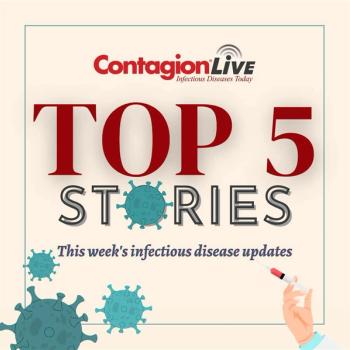
Carole Mitnick, ScD highlights the importance of trust in the success of the endTB trial and addresses the ongoing toxicity concerns with new shorter treatment regimens.
Abene is currently a freelance writer and editor who contributes to Contagion. She is the former Assistant Editor for Contagion. She can be emailed at: sophiaabene@gmail.com.

Carole Mitnick, ScD highlights the importance of trust in the success of the endTB trial and addresses the ongoing toxicity concerns with new shorter treatment regimens.

Kirsten Nielsen, PhD, discusses how her team’s research could lead to better understanding and treatment of cryptococcal meningitis.

Researchers identify Camp Hill virus, a novel henipavirus in shrews, raising concerns about human exposure to emerging infectious diseases.

Robert Walker, MD discussed the company's application for full licensure and the importance of vaccination.

Fecal microbiota transplantation emerges as the top treatment, while probiotics show limited effectiveness in preventing CDI recurrence.

The latest Phase 2/3 trial results show NVX-CoV2601 outperforms its predecessor, offering protection against emerging COVID-19 strains.

European agencies warn that non-medical fungicide use may be fueling resistance in A fumigatus, a mold responsible for severe human infections.

Robert Allen, MD, on variant monitoring, antibody development, and the company's long-term approach to patient care.

Sasirekha Ramani, PhD on creating a broad-spectrum antiviral that could be effective in various clinical settings, especially given the emergence of new and more dominant strains.

Robert Allen, PhD, discusses how Pemgarda’s stability in targeting the spike protein's receptor-binding domain offers crucial protection, including immunocompromised individuals.

Prashant Kumar’s study on indoor air quality aboard cruise ships highlights the critical role of ventilation and masking in reducing infection risks.

Kansas is experiencing the largest tuberculosis outbreak in decades, a preview into vaccines and treatments up for FDA approval this winter/spring, and more.

Gregory Fox, PhD outlines the trial's challenges, the impact of combining results with the TB Champ trial, and the role of collaboration in strengthening research outcomes.

Alejandro Krolewiecki, MD discusses the path to regulatory approval, collaboration with global health organizations, and the role of partnerships in scaling up the new treatment for neglected tropical diseases.

Gregory Fox, PhD discusses the V Quinn trial's results, exploring levofloxacin’s role in reducing TB incidence and the study's approach to combining data with the TB Champ trial.

GAFFI is addressing fungal diagnostic gaps by raising awareness, implementing models, and advocating for resource shifts, despite challenges in funding, infrastructure, and political support.

Alejandro Krolewiecki, MD, discussed testing a combination of albendazole and ivermectin to improve treatments for neglected tropical diseases.

James F Cummings, MD discusses phase 2b trial Phase 2b trial expansion focusing on safety, efficacy, and immune response for Vaxart’s investigational oral vaccine.

Vaccines and treatments are up for approval in early to mid-2025, including a chikungunya vaccine, a meningococcal vaccine, a monoclonal antibody for RSV, and more.

Research into new antifungal treatments, including drugs in phase two and three trials, offers hope for patients who do not respond to current therapies.

Mackenzie Keintz, MD validate an antibiotic appropriateness metric to enhance UTI treatment in outpatient care, addressing challenges in coding and prescribing accuracy.

The impact of the "95-95 by 2025" campaign and successes in countries like Uzbekistan and Guatemala, where action to improve diagnostic tools has addressed fungal infection challenges.

This week, local health department's role in combating HAIs and AMR by strengthening infection prevention, global efforts to address fungal infections, and pandemic preparedness continue to face challenges, and more.

George Thompson, MD, explains a rise in Valley fever cases in CA, with concerns about increased virulence, ICU admissions, and the impact of droughts and wildfires on fungal spread.

David W Denning, FRCP, FRCPath, FMedSci, outlines the "95-95 by 2025" initiative to diagnose and treat 95% of serious fungal infections globally by 2025, focused on improving access in underserved regions.

Sasirekha Ramani, PhD, discusses the potential of 2′FL as a treatment for norovirus and what more research could reveal.

Caryn Fenner and Petro Terblanche outline Afrigen's clinical trial plans, local partnerships, and vaccine pipeline.

Caryn Fenner and Petro Terblanche explain how CEPI’s $6.2 million grant will advance Afrigen’s mRNA vaccine for Rift Valley fever through preclinical and Phase I trials in Africa.

Roche's cobas liat molecular tests for chlamydia, gonorrhea, and Mycoplasma genitalium provide fast, accurate diagnoses in under 20 minutes.

Review finds Long COVID patients experience executive function impairments impacting tasks like shifting, inhibition, and working memory, affecting daily activities.